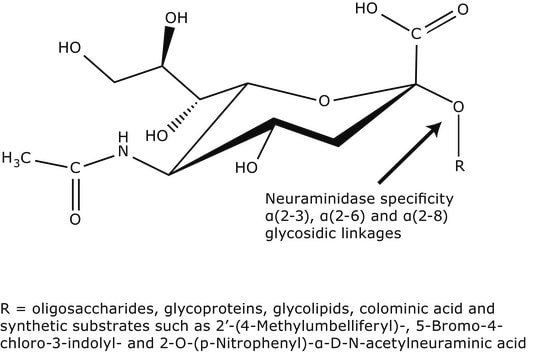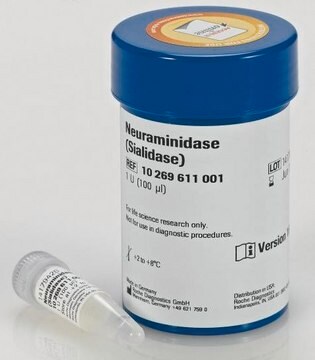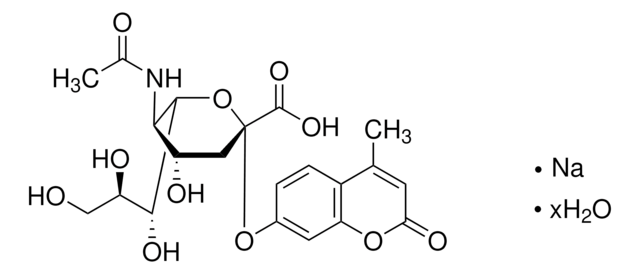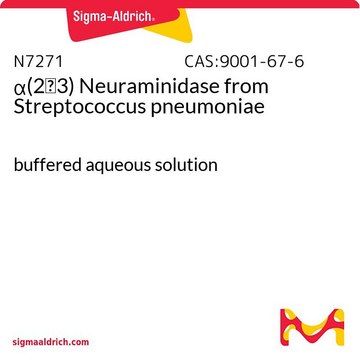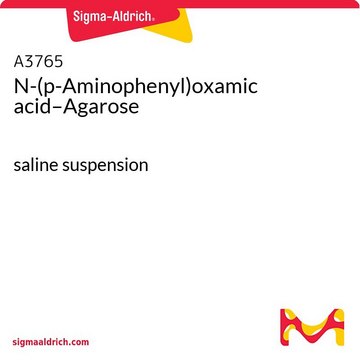Kluczowe dokumenty
N2876
Neuraminidase from Clostridium perfringens (C. welchii)
Suitable for manufacturing of diagnostic kits and reagents, Type V, lyophilized powder
Synonim(y):
Acyl-neuraminyl Hydrolase, Receptor-destroying enzyme, Sialidase
About This Item
Polecane produkty
Poziom jakości
typ
Type V
Formularz
lyophilized powder
aktywność właściwa
≥0.1 units/mg solid (using mucin)
≥1.3 units/mg solid (using 4MU-NANA)
Zastosowanie
diagnostic assay manufacturing
obecność zanieczyszczeń
Protease and NAN-aldolase, present
Warunki transportu
dry ice
temp. przechowywania
−20°C
informacje o genach
Clostridium perfringens str. 13 ... nanI(988807)
Szukasz podobnych produktów? Odwiedź Przewodnik dotyczący porównywania produktów
Opis ogólny
Zastosowanie
Działania biochem./fizjol.
Definicja jednostki
One unit will hydrolyze 1.0 micromole of 2′-(4-methylumbelliferyl)-a-D-N-actetylneuraminic acid per minute at pH 5.0 at 37 °C (using 4MU-NANA as a substrate)
Uwaga dotycząca przygotowania
Komentarz do analizy
Hasło ostrzegawcze
Danger
Zwroty wskazujące rodzaj zagrożenia
Zwroty wskazujące środki ostrożności
Klasyfikacja zagrożeń
Resp. Sens. 1
Kod klasy składowania
11 - Combustible Solids
Klasa zagrożenia wodnego (WGK)
WGK 1
Temperatura zapłonu (°F)
Not applicable
Temperatura zapłonu (°C)
Not applicable
Środki ochrony indywidualnej
Eyeshields, Gloves, type N95 (US)
Wybierz jedną z najnowszych wersji:
Masz już ten produkt?
Dokumenty związane z niedawno zakupionymi produktami zostały zamieszczone w Bibliotece dokumentów.
Klienci oglądali również te produkty
Protokoły
Nasz zespół naukowców ma doświadczenie we wszystkich obszarach badań, w tym w naukach przyrodniczych, materiałoznawstwie, syntezie chemicznej, chromatografii, analityce i wielu innych dziedzinach.
Skontaktuj się z zespołem ds. pomocy technicznej